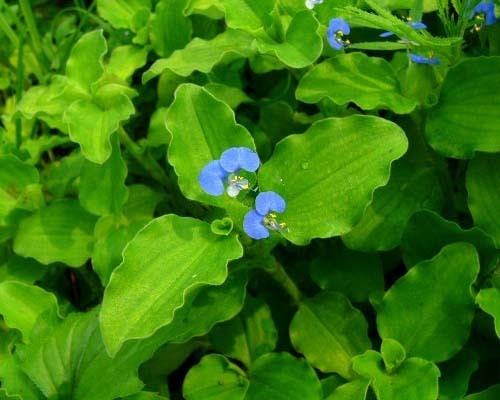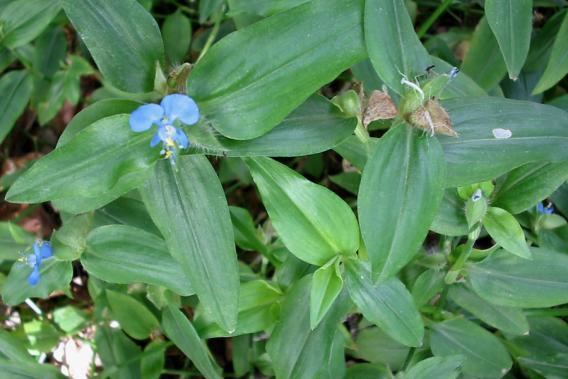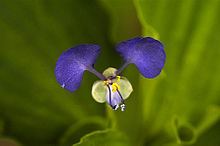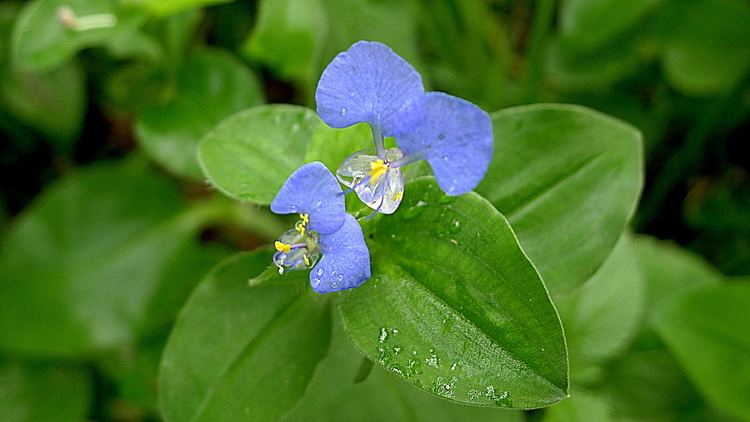Tribe Commelineae Rank Species | Subfamily Commelinoideae Genus Commelina Higher classification Commelina | |
 | ||
Similar Commelina, Commelinaceae, Commelina diffusa, Euphorbia heterophylla, Brachiaria plantaginea | ||
Commelina benghalensis whiskered commelina diya meneriya
Commelina benghalensis, commonly known as the Benghal dayflower, tropical spiderwort, or wandering Jew, kanshira in Bengali, is a perennial herb native to tropical Asia and Africa. It has been widely introduced to areas outside its native range, including to the neotropics, Hawaii, the West Indies and to both coasts of North America. It flowers from spring into the fall and is often associated with disturbed soils.
Contents

In both it native range and areas where it has been introduced it is usually considered a weed, sometimes a serious one. In the United States it has been placed on the Federal Noxious Weed List. It is considered a moderate weed of rice cultivation in Asia. In its native range of sub-Saharan Africa, India, Sri Lanka, and much of Southeast Asia, it is considered a serious weed of an enormous range of crops from tea and coffee to cassava and peanuts. Additional agricultural damage is caused by the fact that it can host the nematode Meloidogyne incognita and the Groundnut rosette virus.

In China it is used as a medicinal herb that is said to have diuretic, febrifugal and anti-inflammatory effects, while in Pakistan it is used to cure swellings of the skin, leprosy and as a laxative.

Distribution and habitat

Commelina benghalensis is a wide-ranging plant, being native to tropical and subtropical Asia and Africa, an area otherwise known as the paleotropics. In China it is commonly associated with wet locations. There it can be found from near sea level up to 2300 metres. It is present from the provinces of Hebei and Shandong in the northeast, west to Sichuan and in all provinces south to Hainan, the southernmost province. It is also found in Taiwan. In Japan the plant is restricted to the southern portions of the country from the southern Kanto Region westward and including the islands of Shikoku and Kyūshū. Although its roots and tubers are used as a food source, C. benghalensis is not cultivated in Ethiopia, where it grows as a weed.
The plant has also been widely introduced beyond its range to the neotropics, the southeastern United States, California, Hawaii, Cuba, Jamaica, Puerto Rico, Martinique, Montserrat, Barbados and St Vincent. In Puerto Rico the plant is known from a single collection from Cayey. In the southeastern United States the plant was collected in the 1928, while it was first collected in Hawaii in 1909. In the southeastern states it is present in Florida, Georgia, Louisiana and North Carolina and spreading. It was added to the Federal Noxious Weed List in 1983, and by 2003 was considered the most serious pest of Georgia's cotton crop due to widely used herbicides such as glyphosate having little effect on it. It was introduced separately to California in the 1980s, making it the only introduced species of Commelina in the western United States. It is associated with disturbed soils such as yards, lawns and cultivated areas, especially in cotton crops and orange groves.
Uses
In China, the plant is used medicinally as a diuretic, febrifuge and anti-inflammatory. In Pakistan it is used as animal fodder and also eaten by humans as a vegetable. It is also used there medicinally, but with different purported effects, including as a laxative and to cure inflammations of the skin as well as leprosy. The people of Nepal eat the young leaves as a vegetable, use a paste derived from the plant to treat burns, and treat indigestion with a juice produced from the roots. Its use as a famine food in India has been recorded. In southeast Asia and Africa it is used as fodder and also medicinally as a poultice.
